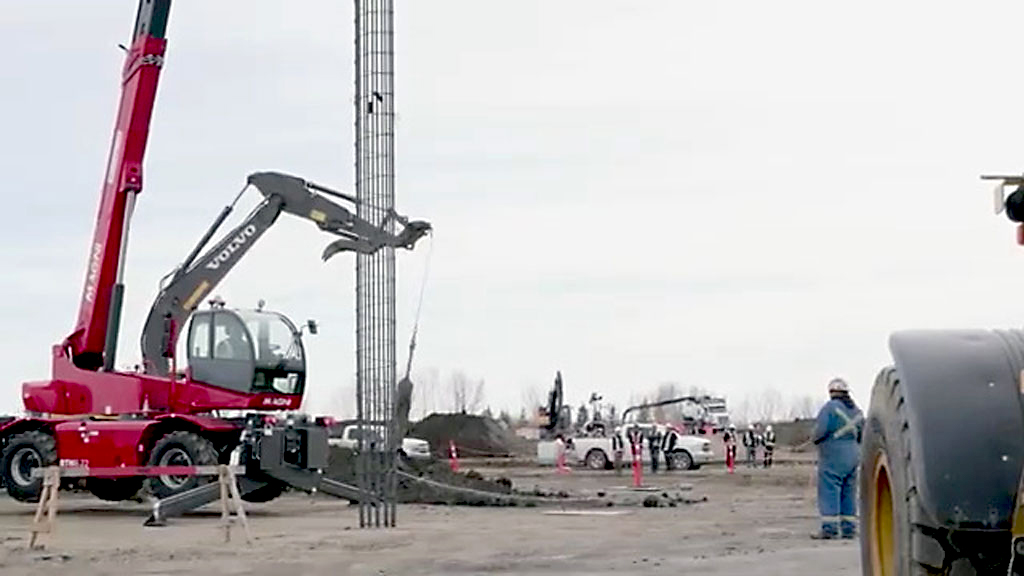Thousands of construction workers will be needed in Alberta’s Industrial Heartland area over the next five years as it heads into the Dow building boom, with close to $13.1 billion in new construction.
The (BTA) is putting a strategy into place to meet surging the labour demands.
But the said the Dow boom is only part of the picture.
“In the Greater Edmonton area there are 191 projects totalling approximately $96 billion in value – $63 billion are under construction and another $30 billion are proposed. Dow is $9 billion of that,” said association president David Johnson.
BTA executive director Terry Parker said his focus will be on ensuring jobs for Albertans, followed by Canadians, and then U.S. workers where the BTA has already had talks with local union building councils.
“If things are booming south of the border, we have connections to other parts of the world,” he said, putting the trade union reach to Europe, Australia and India.
The Industrial Heartland, northeast of Edmonton, is a designated industrial zone whose lands include 533 kilometres within the City of Fort Saskatchewan, Lamont, Strathcona and Sturgeon Counties and 49 kilometres within the City of Edmonton.
In late 2023, Dow made the decision to go ahead with a $8.9 billion expansion, with construction started in mid-2024 requiring a peak workforce of 6,000 to 7,000 starting in summer 2025 and continuing for 18 months.
Dow is building the world’s first net-zero carbon emissions (scope one and two carbon dioxide emissions) ethylene cracker and derivatives complex at its 2,500-acre Fort Saskatchewan site.
Prep and groundwork is underway and contractors are installing 4,000 pilings to support the cracker installation. Phase one’s completion date is the end 2027, while the second phase will be complete in 2029.
Linde announced in August it signed an agreement with Dow to supply clean hydrogen for the Path2Zero project with a new $2 billion plant coming online in 2028.
Cando Rail & Terminals is spending $200 million to expand its Sturgeon Multi-Purpose Rail Terminal, doubling it in size, and partnering with Dow as an anchor tenant at the terminal. Engineering designs are expected to be completed by the end of 2024 and construction will start in second quarter of 2025.
ATCO Ltd. is planning to build a 200-kilometre natural gas pipeline along the Yellowhead Highway west of Edmonton to support a Dow’s net-zero petrochemical project at a cost of $2 billion. It is slated to begin to supply gas in early 2027.
Parker said the boom in the Industrial Heartland area is an opportunity to train up a new generation of apprentices and the industry needs to tap into women, Indigenous members, young people and new immigrants with skills. Many of the member unions have their own training programs but the building trades are also working with other training organizations. Retired journeymen can also be expected to return to work on large projects, he said.
He said there have been numerous discussions with Dow and the general contractor Fluor regarding the workforce at the open-shop project.
“We want to make sure that illegal immigrants are not coming in,” he said.
In 2023, Fluor, with a Dow work history, received the contract for front-end engineering and design, plus engineering, procurement and construction management services for the ethylene cracker and derivatives complex. Fluor is also doing utilities, power and infrastructure as well as expanding and retrofitting Dow’s existing manufacturing facilities.
Dow is also partnering with Wolf Midstream, which will provide CO2 transportation along the Alberta trunk line, and with Ravago which will provide third-party logistics for finished products from the site.
Parker said Alberta’s tradesmen have many skills needed for Dow’s project.
“If any province has the expertise, it is our province. We have been doing this for 60 years and our members are trained to the highest standard and are sought after across the world.”
Johnson said his association is working with municipalities and government to ensure policies lead to education, training and retention of labour and skilled workers and the infrastructure such as schools and housing are available for those coming to the province and Edmonton area.
“BuildForce Canada has identified the Dow project as one which will create 20,000 jobs between now and 2030,” he said.
Johnson said he wants to see jobs go to Alberta companies plus new opportunities will be created for companies by the coming boom.
“There is a small pool of labour and everyone is going to compete,” he said, adding there is potential for smaller companies to step up to take on larger projects and grow.
Skilled tradesmen will also have the opportunity to move to a new industry sector.
Mark Plamondon, executive director of , which is a non-profit municipal collaboration to promote development, said “this is a massive project” that will draw in other investment companies taking advantage of the clustering impact.
“The economic impact is not just in construction,” he said. “But, when a company like Dow, which has operations all over world, builds the first net-zero in the world in the heartland, the entire world takes notice.”





I am a B pressure welder union local 488 of edmonton.
I hope we will get some work somewhere on one of these projects.
Last time they build IPL by shellac scotford the site was filled by foreign workers and me as Canadian living in Fort-Saskatchewan 15 minutes from that site was sitting at home not working .